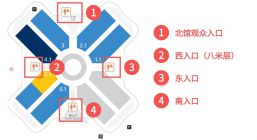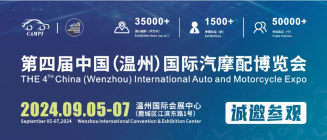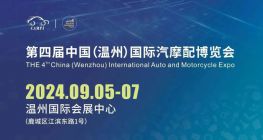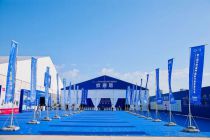Is it the right time to introduce vehicle virtualization technology into the automotive industry?
"The greatest value of the virtualized vehicle is that it can greatly reduce the time cost."
March 14-16, 2023, at the 2023 Fourth Software Definition Automotive Forum and AUTOSAR China Day. Zheng Xinhang, the chief technical officer of Itech China, said that the virtual vehicle platform can be provided by the model design engineering company, and can also be integrated and iterated by the vehicle factory based on the collected data. For example, the vehicle factory can integrate a set of vehicle virtualization platform based on the data from different suppliers. In the future, the development process of the virtual vehicle platform may involve hundreds of different electronic control units and corresponding versions, Every month or even every week, it will experience dozens of versions of iterations.
Zheng Xinhang specifically mentioned that the IT infrastructure (including the framework of continuous deployment, testing and automated virtualization testing) will be the key construction content of the virtual vehicle platform.

Zheng Xinhang, Chief Technology Officer of Itech China
The following is the arrangement of the speech content:
Many colleagues in the industry are familiar with the concept of virtualization. However, under the general trend of software defining vehicles, vehicle virtualization can have a great impact on vehicle software development. Today, I would like to explain to you the definition of complete vehicle virtualization by Itech by answering the following four questions: First, what is virtualization? Second, is it the right time to introduce vehicle virtualization technology into the automotive industry? Third, what advantages can vehicle virtualization bring? Fourth, share the business practice of Itech in vehicle virtualization.
What is virtualization?
I believe that most of the industry experts present here have a background in software development. I want to ask a question about the practice of software development itself: What are the similarities between software development in the aerospace industry and application development in the mobile phone industry?
In the view of Itsch, although the two industries have great differences in the development process, they are committed to reducing the dependence on hardware test resources. In the mobile phone industry, although the mobile phone is now a household consumer product, the developers of each mobile phone application will face dozens of models, and need to develop different operating configurations and software platforms for them. In the development process, it is impossible to configure each type of different models once, which is why the current mobile software development is highly concentrated on two mainstream development platforms - Android and Apple.
Back to the aviation industry, we know that the software development process in the aviation industry is famous for its high cost and high cycle.
Taking the C919 as an example, I ask you to guess what is the total test flight duration of the C919 before it enters the commercial trial run? According to the Xinhua News Agency in March, the test flight lasted 100 hours. From the perspective of the automobile industry, this number is incredibly small. The commercial aircraft test flight of 100 hours is not a special case in China. Even Boeing, the leading enterprise in the U.S. industry, from the design of new aircraft to the delivery process, to the final mass production into commercial operation, the actual flight test hours are also between 100-200 hours.
So, how do these airlines ensure the reliability and safety of the aircraft? In fact, Boeing's laboratory can conduct intensive virtualization testing within five weeks, reaching a total of 45 years of flight test validity. It is through the massive application of virtualization technology that even projects like Boeing 777, which have more than 3 million parts, 7000 R&D personnel and hundreds of parallel R&D teams, can reduce the dependence on hardware test flight through virtualization during the development process.
After talking about the aviation industry, return to the automobile industry. Virtualization has been used in the deep embedded software development and simulation of traditional automobiles. In this process, control software can be divided into two categories: one is the actual development based on traditional hardware; The other can speed up research and development through virtual simulation technology.
Let me give a simple example. Before the appearance of ABS, the driver must control the vehicle by means of braking to avoid skidding. However, with the gradual introduction of anti-lock system, this situation has changed. Anti-lock braking system is an automatic control system software introduced in the automobile industry. It can send high-frequency braking commands by a set of control software to control the interaction between the brake pads, tires and the ground, improve the handling performance of the whole vehicle in an emergency, and prevent the vehicle from losing control.
This example actually reflects two software architectures for vehicle control: one is the controlled object, namely, tire, brake pad and hydraulic power system; The other is the car control system. So how does virtualization play a role in the development process? Traditional software development needs to be based on actual hardware. Before mass production of the whole vehicle, professional engineers can find the optimal parameters through a large number of tests under different road conditions, for example, through tests to determine how high frequency the anti-lock system needs to send the brake command.
The introduction of virtualization into the development of automobile software is to achieve the same effect as measured in the environment of laboratory and simulation computer through virtual simulation. Its principle is to simulate the actual physical parameters that may be generated by the components in the physical world, such as the friction coefficient between the tire and the ground, and the transmission torque between the brake pads and the hydraulic system, through the mathematical simulation tools and relying on various data modeling.
Is it the right time to introduce vehicle virtualization technology into the automotive industry?
So, in the trend of software defining cars, what will be the impact of simulation and virtualization? From the perspective of Bosch and Itsch, we believe that the development and testing of the core control software in the vehicle will be further integrated. The traditional development method is independent testing by different parts manufacturers. For example, the brake supplier will conduct isolation testing for the brake control software in its own laboratory or independent testing environment. However, with the development of electronic and electrical architecture, the future electronic control software will move towards integration. For example, the thermal control system of the whole vehicle should not only be responsible for the comfort of the driving and riding area in the vehicle, but also control the battery to be in the optimal temperature area according to the driving and control operation of the electric vehicle. Multi-functional consideration must put forward higher requirements for the simulation test, and "fusion" is the key word.
This also puts forward higher requirements for vehicle manufacturers, mainly reflected in the following three aspects.
First of all, in the process of ECU development, it is necessary to have appropriate tools to automatically, efficiently and accurately define the logic and parameters of ECU control software from the modeling stage; Secondly, the vehicle manufacturer and the parts supplier are required to accurately simulate and simulate the controlled spare parts (such as brake pads, transmission systems or batteries), and integrate them with a series of tools and control software; Finally, there is a high degree of integration demand. Under the trend of intellectualization, the number of complete vehicle ECUs will be even larger, which requires efficient integration of software components from different parts suppliers and simulation parts suppliers to build a high-precision virtual simulation platform for the whole vehicle.
What practical benefits can vehicle virtualization bring to the automotive industry?
Imagine the practical benefits that vehicle virtualization can bring to vehicle manufacturers: First, it can greatly reduce the development cost of the vehicle and reduce the dependence on hardware during the development process; 2、 It can shorten the development cycle. With the application of high-precision virtual simulation platform, once a new version of ECU controller appears, it can automatically import the high-precision virtual vehicle platform provided by the vehicle manufacturer to complete the development and testing in the virtual environment without the need for physical vehicle testing, which can greatly reduce the production cycle.
Thirdly, according to the actual project experience of Itech in the industry, vehicle virtualization can also greatly reduce the difficulty of cross-department collaboration and break the barriers of department collaboration. In the development process, the closer to the mass production of the whole vehicle, the easier it is to find the high-level defects of the whole vehicle that are difficult to find in advance. At this time, it is often easy to have wrangling and prevarication between various departments. At this time, the concept of virtual vehicle can play a certain role, because any R&D business department will deploy the newly generated virtual ECU to the high-precision virtual simulation platform for relevant simulation tests in the process of developing new functions, so as to clarify the division of labor between different departments and reduce the shifting of responsibilities.
Based on this, we further found that the virtual vehicle platform can not only break the barriers between R&D departments; Suppliers from the entire software supply chain can also be invited to join in the development of virtual vehicles to build an ecosystem. This is also the pain point that enterprises often encounter in the traditional vehicle development process: parts enterprises hope to test as soon as possible and more frequently, instead of relying on cloud models, and wait until the vehicle is close to mass production before carrying out the vehicle integration test. This is also the overall value vision of Itech relying on the virtual vehicle platform to build the future development ecosystem.
Itech's business practice in vehicle virtualization
Just now, we introduced the understanding of the industry trend, especially the whole vehicle virtualization, and the industry value we bring to it. Now we are also very happy to introduce some practical practices of Itech in the process of vehicle virtualization. As mentioned just now, the maximum value of virtualized vehicles can greatly reduce the time cost. The core idea is to integrate the traditional cloud model with the concept of continuous deployment and continuous integration in the IT software development industry. From the perspective of developers, there are mainly three cycles.
From the perspective of the developer, the high precision vehicle virtual simulation platform of Itech will mainly experience three data cycles in specific applications:
The first cycle is mainly for parts suppliers. Parts enterprises can import the high-precision vehicle virtual simulation platform at the early stage of development, input the specific parameters of the developed components into the platform, deploy the virtual components to the platform in a dynamic and real-time manner, and conduct automatic testing, verification and update. After meeting the quality standards, they can submit it to the main engine factory for testing in real time. The second cycle is for the main engine plant. The high-precision vehicle virtual simulation platform can integrate, verify and calibrate the virtual components and ECU controllers from different suppliers. The third cycle carries out "shadow calibration" for vehicles entering mass production. The main engine factory can use these mass production data to train, iterate and upgrade automatic driving and other functions.
What is the biggest challenge of the virtual vehicle platform?
At present, the future goal of many vehicle manufacturers is to eliminate most of the tests that rely on hardware in the process of vehicle virtualization, like the aerospace industry. The challenges are self-evident.
So, what is the core difference between virtual vehicle platform and physical hardware test? That is to ensure the accuracy of the virtual vehicle. It is necessary to ensure that the test results produced in the virtual simulation environment have a small deviation from the actual physical world vehicle hardware test, so as to save the test cost and improve the test efficiency.
However, in the past few years, in the development process of the Internet of Vehicles and even vehicle-road collaboration, various vehicle manufacturers have accumulated a large amount of data, but these data are basically idle and have not been well used, helping enterprises improve the test efficiency and simulation accuracy in the vehicle development process. In this regard, Itsch put forward the concept of "joint calibration".
The core idea of this concept is to match test scenarios and test cases in the physical world with test scenarios and test cases in the virtual environment in a one-to-one manner.
In the first step, the traditional vehicle test and calibration process is still used in the construction process. The main test object in the first stage is ECU software. The traditional test and calibration engineer can connect the actual physical hardware, such as brake chassis or air conditioner in the vehicle. During the test process, the controller software version that has been optimized and actually corresponds to the physical characteristics of the vehicle can be found through various calibration parameters tuning.
After the first step, the software of the relevant controller can be migrated to the virtual environment, and the second step is to use equivalent test cases. But in the second cycle, the system under test becomes the controlled object model, that is, the brake pad, motor or vehicle air conditioning system simulated in the virtual environment. Through the same test case, the physical test can be used to drive the model simulation of the controlled object in the virtual environment in a one-to-one way. At this time, the controller software version can meet the actual accuracy requirements and quality expectations due to the high degree of testing. The main goal of the second cycle is to improve the overall accuracy of the controlled plant model.
After reaching the quality target, we can confirm that the controller software and the controlled object model can meet the overall quality standard, and then we can enter the third cycle.
In the third cycle, the whole virtual environment and the controlled object model become part of the high-precision test environment. Whether the controller software changes parameters or the software undergoes iterative updating, these can be directly put on the high-precision vehicle platform. At this time, the vehicle controlled object model can highly simulate the actual performance of the vehicle in the physical world. The above three cycles are the concept of "joint calibration" by Itsch, whose overall goal is to improve the simulation accuracy of the whole vehicle test on the virtualization platform.
It is worth noting that the development and launch of the complete vehicle does not mean the end of the virtualization process. The data generated after mass production is also of high value. Itech's basic idea is to dynamically put in real-time calibration algorithm through the redundant computing power in the future autonomous intelligent vehicle. In the process of vehicle testing and calibration, emissions, powertrain and brake performance are meaningful only when they meet specific operating conditions. To this end, Itech provides a rich tool chain for vehicle development enterprises, especially for calibration and test verification departments, which can calibrate the system under specific conditions and identify the actual calibration trigger points according to the working conditions; Then use the in-car computing power to process the data preliminarily, generate useful tags and relevant vehicle behavior analysis, and finally send them back to the cloud.
Itech's future vision based on vehicle virtualization
In the future, Itech's vision is to build a virtual ecosystem of cars using virtual vehicle technology. The high-precision vehicle test platform can not only be used in the internal research and development of the vehicle factory, but also be open to partners and suppliers during the development process. Different enterprises can choose various modes to participate in the platform construction and decision-making, such as opening cloud platform accounts, generating and testing virtual ECUs in the cloud, and managing different versions of software.
In view of the key challenge of simulation accuracy, in addition to the concept of joint calibration, Itsch proposed that the virtual vehicle platform can be provided by the model design engineering company, or the vehicle factory can integrate and iterate gradually based on the collected data. For example, the vehicle factory can integrate a set of vehicle virtualization platform based on the data from different suppliers. In the future, The development process of the virtual vehicle platform may involve hundreds of different electronic control units and corresponding versions, and it will experience dozens of versions of iterations every month or even every week.
At the same time, Itech hopes to integrate the joint calibration and shadow calibration of the virtual vehicle to connect the digital and virtual world. This is also the digital twin vision of the whole vehicle mentioned by the industry in the past 10 years. Itech hopes to promote the realization of this vision through vehicle virtualization.
(The above content is from the keynote speech "Vehicle virtualization will redefine the development model of automotive software" delivered by Zheng Xinhang, the chief technical officer of Itech China, on March 14-16, 2023 at the 4th Software Definition Automotive Forum and AUTOSAR China Day in 2023.)
AMS2024 Exhibition Guide | Comprehensive Exhibition Guide, Don't Miss the Exciting Events Online and Offline
Notice on Holding the Rui'an Promotion Conference for the 2025 China (Rui'an) International Automobile and Motorcycle Parts Exhibition
On September 5th, we invite you to join us at the Wenzhou Auto Parts Exhibition on a journey to trace the origin of the Auto Parts City, as per the invitation from the purchaser!
Hot Booking | AAPEX 2024- Professional Exhibition Channel for Entering the North American Auto Parts Market
The wind is just right, Qianchuan Hui! Looking forward to working with you at the 2024 Wenzhou Auto Parts Exhibition and composing a new chapter!
Live up to Shaohua | Wenzhou Auto Parts Exhibition, these wonderful moments are worth remembering!
Free support line!
Email Support!
Working Days/Hours!





